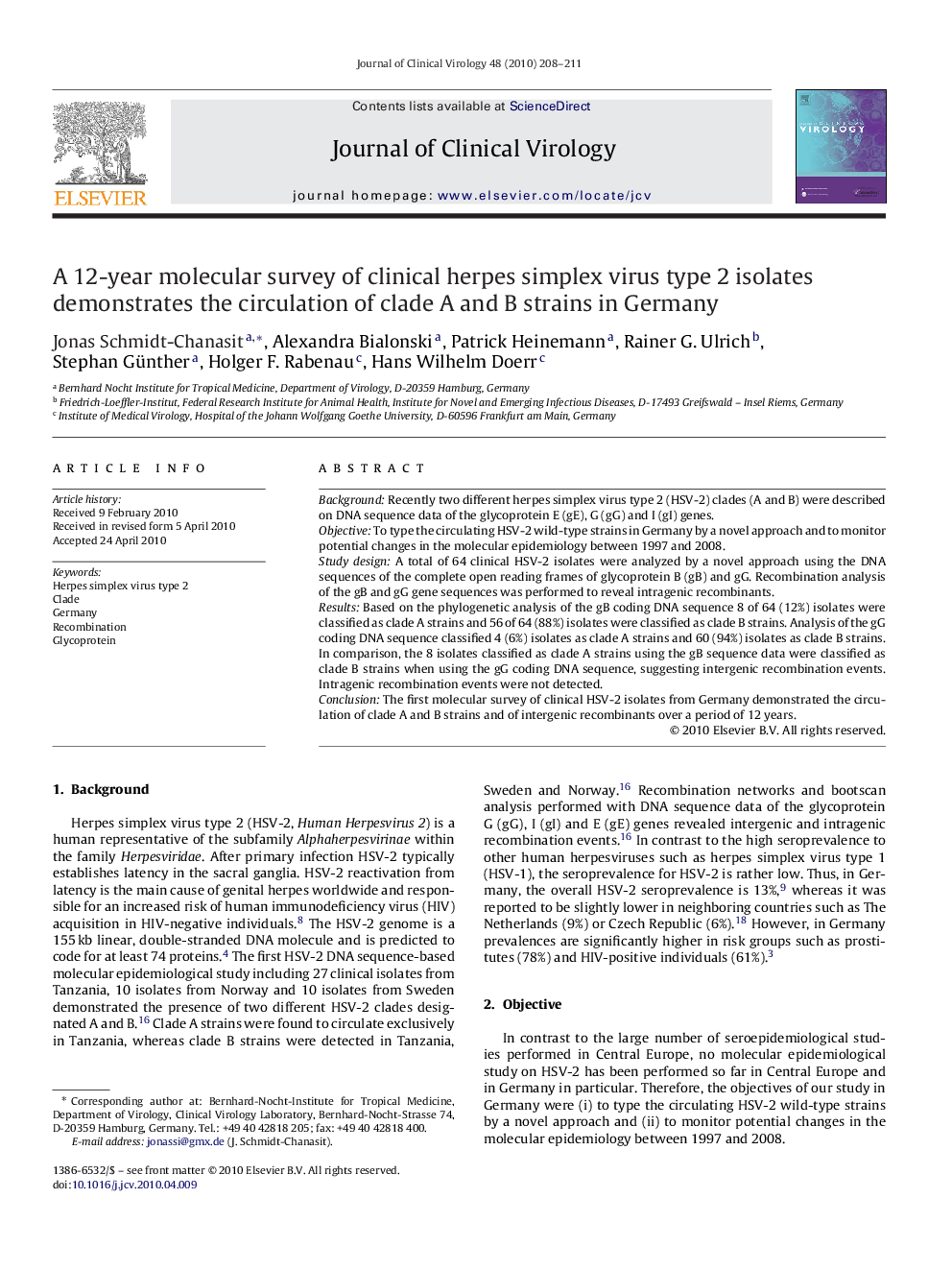| Article ID | Journal | Published Year | Pages | File Type |
|---|---|---|---|---|
| 3369470 | Journal of Clinical Virology | 2010 | 4 Pages |
BackgroundRecently two different herpes simplex virus type 2 (HSV-2) clades (A and B) were described on DNA sequence data of the glycoprotein E (gE), G (gG) and I (gI) genes.ObjectiveTo type the circulating HSV-2 wild-type strains in Germany by a novel approach and to monitor potential changes in the molecular epidemiology between 1997 and 2008.Study designA total of 64 clinical HSV-2 isolates were analyzed by a novel approach using the DNA sequences of the complete open reading frames of glycoprotein B (gB) and gG. Recombination analysis of the gB and gG gene sequences was performed to reveal intragenic recombinants.ResultsBased on the phylogenetic analysis of the gB coding DNA sequence 8 of 64 (12%) isolates were classified as clade A strains and 56 of 64 (88%) isolates were classified as clade B strains. Analysis of the gG coding DNA sequence classified 4 (6%) isolates as clade A strains and 60 (94%) isolates as clade B strains. In comparison, the 8 isolates classified as clade A strains using the gB sequence data were classified as clade B strains when using the gG coding DNA sequence, suggesting intergenic recombination events. Intragenic recombination events were not detected.ConclusionThe first molecular survey of clinical HSV-2 isolates from Germany demonstrated the circulation of clade A and B strains and of intergenic recombinants over a period of 12 years.
